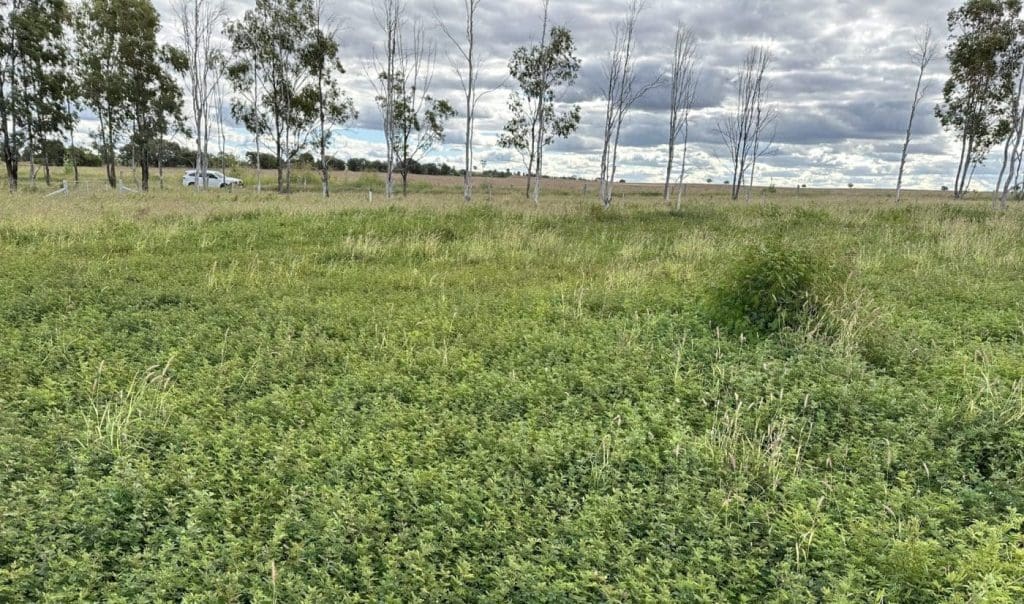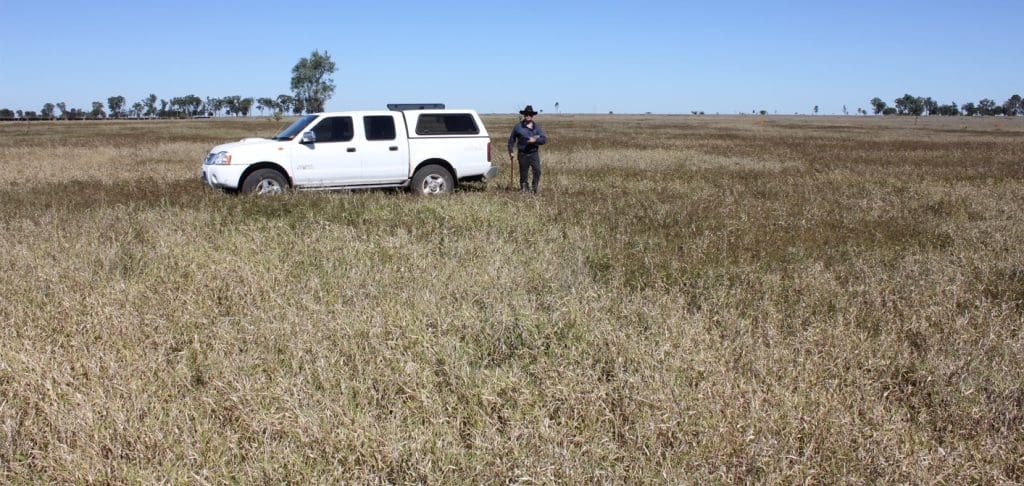
On the hunt for long-forgotten legume pasture trial sites in southern Queensland
A NETWORK of long-forgotten legume pasture trial sites scattered across southern Queensland is delivering a tremendous new legacy for the beef industry.
Five new stylo varieties have resulted from some clever detective work – firstly in re-discovering long-lost pasture trial sites – some planted almost half a century ago – and secondly in analysing their performance for valued traits such as persistence and frost tolerance.
The work is taking place under the Queensland Pasture Resilience Program, a $24 million initiative (details below) addressing three significant threats to beef productivity in northern Australia: pasture dieback, land condition decline and pasture rundown.
Long-term persistence
Queensland Department of Agriculture agronomist Gavin Peck, who leads the program’s southern Queensland pastures project, told a Beef 2024 seminar audience that with legumes, the number one priority among producers wanting to improve pastures was always long-term persistence.
“In inland areas of Queensland, what’s being described is 20 to 50 year persistence. That’s different from southern Australia, where they tend to talk more of a ten year horizon,” he said.
“Effectively, producers in southern Queensland want to sow legumes once, and once only.”
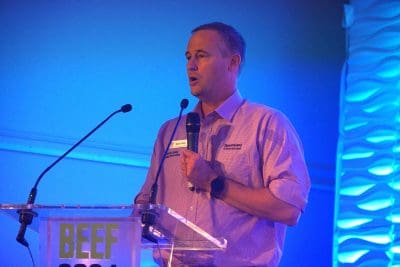
Gavin Peck addressing a Beef 2024 seminar recently
Among other important traits raised by potential users, production (legume yield) was often second, and always liveweight gain. Seed production, seasonality and (in more recent times) methane reduction potential came further down the list.
Mr Peck said typical industry pasture R&D programs tended to run on three to five year funding cycles.
“If we are wanting to select a legume that’s persistent for 20 years or more, those funding cycles make it very hard to directly measure persistence,” he said. “That’s left us wondering, with some of the varieties that get released, what their long term persistence is really like.”
This challenge has led to a novel approach: examining the value of old pasture evaluation sites scattered across the bottom half of Queensland.
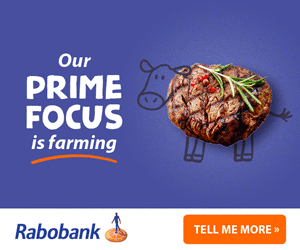 There has been a history stretching back more than 50 years of evaluating new legumes on such sites (one example established in 1978), which provided the opportunity to go around, and re-visit those sites for evaluation purposes, for what cultivars have persisted long-term.
There has been a history stretching back more than 50 years of evaluating new legumes on such sites (one example established in 1978), which provided the opportunity to go around, and re-visit those sites for evaluation purposes, for what cultivars have persisted long-term.
“We literally jumped in a vehicle and went searching for known old legume trial sites,” Mr Peck said.
In one photo example shown to the seminar, the trial legumes were not only still thriving in the trial plot, but had spread up a nearby hill in the surrounding paddock.
To be able to find some of the long-neglected sites required recruiting long-term experienced (often retired) pasture scientists from CSIRO and Queensland DAF, spending some long days to ‘re-discover’ the original plot sites. One of those people was respected retired agronomist Bob Clem.
“We found some pretty interesting plants,” Mr Peck said.
One desmanthus plot near Roma had persisted for well over 20 years, in that frosty environment.
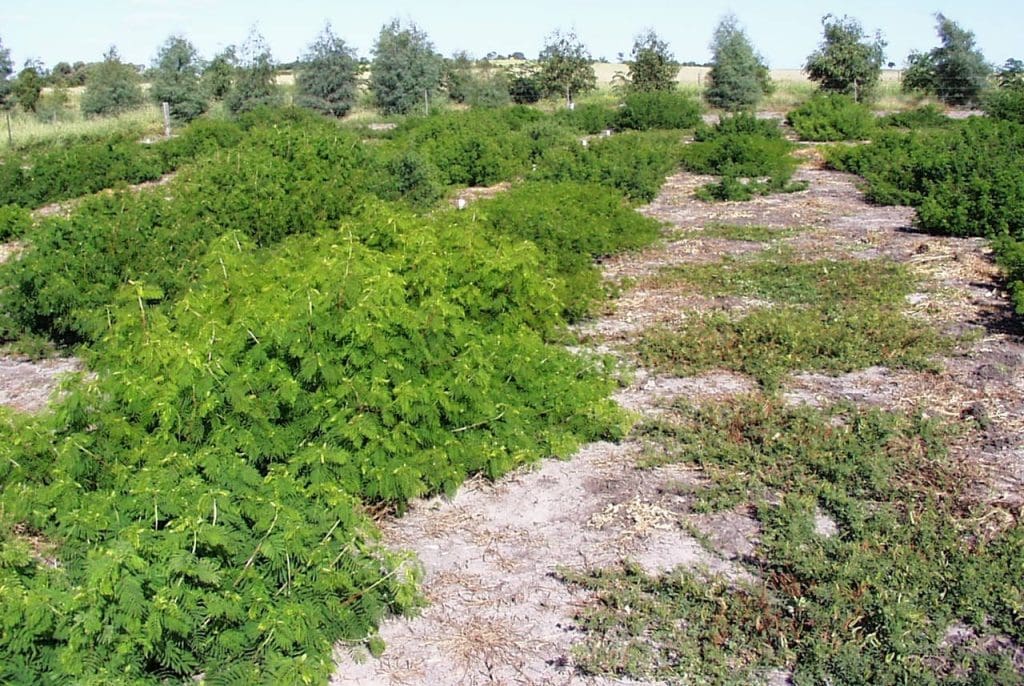
A legume trial site near Roma,. pictured in March 1999. The image below is the same site taken in May this year. Reference tree plantings at rear.
Conclusions
The re-discovery exercise, together with more recent evaluation trials and commercial grazing paddocks, had produced some valuable conclusions about legume performance in southern and central Queensland.
“Leucaena can be productive and persistent on good soils, with low frost incidence and good management. But if you take away any of those things, its persistence is compromised,” Mr Peck said. “Sub-soil constraints, lower soil fertility or heavy frost means it struggles to persist and be productive in the long-term.”
“With desmanthus, there’s a wide range of different species. When we went around the old trial sites, one of them tended to be persistent and widespread – Desmanthus virgatus. But there are some questions about its productivity – in the long term it tends to produce a very high population of small plants, that drop their leaves fairly early.
“But there were other desmanthus species on the old sites that were more productive. They produce bigger yields, but unfortunately haven’t been as persistent in a widespread area. On some older sites, it was doing OK, but generally, it has not persisted.”
Among the stylo varieties found in the legacy trial sites, Caatinga had proven to be widespread and persistent, but questions arose about its persistence in the sties to the south of the state.
“Cold and wet winters tend to produce high death rates for Caatinga,” Mr Peck said.
Other species of stylo found in trial sites had proven persistent and productive in Central Queensland, but ‘not in the frosty south’ of the state.
That’s where our new varieties come in,” Mr Peck said. “Producers are really targeting adaptation in those frosty inland areas.”
Among other legume species found in the legacy sites, they had largely not been persistent, with a couple of niches, like butterfly pea on the Central Highlands, or medics on frosty clay soils.
Southern inland Queensland
Focussing on frosty southern inland Queensland, it had proven to be a real challenge to find well adapted legumes for the region, Mr Peck said.
“It tends to be too cold, and does not get enough rain during summer, yet the winter rain is not reliable enough for temperate annuals,” he said.
It means that for the region’s sandy soils, there are currently no commercially available widely adapted summer or winter growing legumes available.
For clay soils, some tropical legumes were showing promise, but their long-term persistence and productivity was still to be proven.
“With the temperate legumes, medics are widely adapted, but their productivity from year to year varies dramatically, due to variability in winter rain.”
Eight year selection project
Under an eight-year project looking for promising new stylo varieties for southern Queensland, candidates were selected for performance on light textured soils in frosty locations.
“When we visited the old pasture evaluation sites, we found stylo persisting and spreading at five old sites,” Mr Peck said.
All had been there for more than 20 years, and in one case, up to 48 years.
In one case near Roma, the stylo had not only persisted at the trial site, but spread 2km away – showing really good adaptation to the soils and climate. The same happened at a trial site near Millmerran.
Because many of the exclusion fences surrounding the old trial sites are long gone, they tended to be preferentially grazed by cattle from the surrounding paddock, Mr Peck said.
In one photo, stylo plants were being hammered to close to ground level, but were stubbornly persisting as a ’little protein island,’ in the surrounding grass paddock.
“So we know that these plants are both cold-tolerant and grazing tolerant,” Mr Peck said. “Pretty promising.”
That was enough evidence to get a project up and running, with legume samples collected from eight old trial sites – numbering 40 separate legume lines.
Trails were established on sandy and loamy soil on six sites – one of which failed.
Averaged across the five remaining sites (third and fourth growing season), the five new stylo varieties when compared with existing commercial species showed a clear improvement in average yield – on average 40-70pc yield improvement over the best performing current commercial variety – Unica.
On the sandy soil sites and colder trial sites, the difference was even greater. On some sites, Unica virtually died out, while some of the experimental lines were clearly still dominating the plots in their sixth growing season.
The project is now at the stage of commercialising the five promising lines to become new varieties, with seed increase currently taking place.
Partners will be found with seed production companies for pasture seed sales and marketing in coming years. An R&D program has already been secured to support the release and commercial use of the new varieties. While all of the trials in the five new varieties has so far been in southern inland Queensland, a big part of the R&D program would be to test them more broadly.
Commercial quantities of seed should start to become available in 2027.
Shrubby stylos
Among shrubby stylos collected at the old trial sites, several examples were found of the same bio-type as Seca, which proved to be ‘interesting, but not good enough for release in southern Queensland.’
“But when we grew them at Mareeba (on the dry northwestern fringes of the Atherton Tableland, west of Cairns in far North Queensland), they produced four times the yield of Seca stylo, regarded as the industry standard for shrubby stylo in North and Central Queensland.”
“A fourfold increase in yield is pretty exciting. If that trial result is indicative more broadly across those regions, we might have an improved variety of shrubby stylo, as well,” Mr Peck said.
Desmanthus
Similarly, old desmanthus trial sites are being examined, looking for plants that are persistent, with higher yield and better leaf retention into autumn.
“In effect we are looking for a more productive desmanthus virgatus, or a more persistent big desmanthus.
“We think we have one of each,” Mr Peck said.
“There’s clear yield differences already in trials, better leaf retention into autumn and dominating the plot, as well.”
Queensland Pasture Resilience Program
The $24.4 million Queensland Pasture Resilience Program is addressing three significant threats to beef productivity in northern Australia: pasture dieback, land condition decline and pasture rundown.
A partnership between the Department of Agriculture and Fisheries, Meat & Livestock Australia and the Australian Government through the MLA Donor Company, the five-year program will incorporate a range of research, development and extension activities.
Capitalising on DAF’s world-leading research and extension expertise, the Queensland Pasture Resilience Program will help grazing businesses improve:
- land condition and carrying capacity
- animal growth and reproduction rates
- capacity to manage drought
- carbon market opportunities and methane reduction.
In particular, the program is focussing on:
- best-practice grazing land management
- adoption of tropical/sub-tropical pasture legumes
- development of new pasture legume varieties
- optimum fertilising of sown pastures
- pasture dieback management.
As well as improving land condition through sustainable grazing land management, the program will encourage greater adoption of pasture legumes, which reduce methane emissions intensity. This will support the red meat industry’s goal to be carbon neutral by 2030 and the Queensland Government’s Low Emissions Agriculture Roadmap 2022-2032.
Pasture legumes improve the productivity of native and sown grasses when well managed, boosting profitability.

